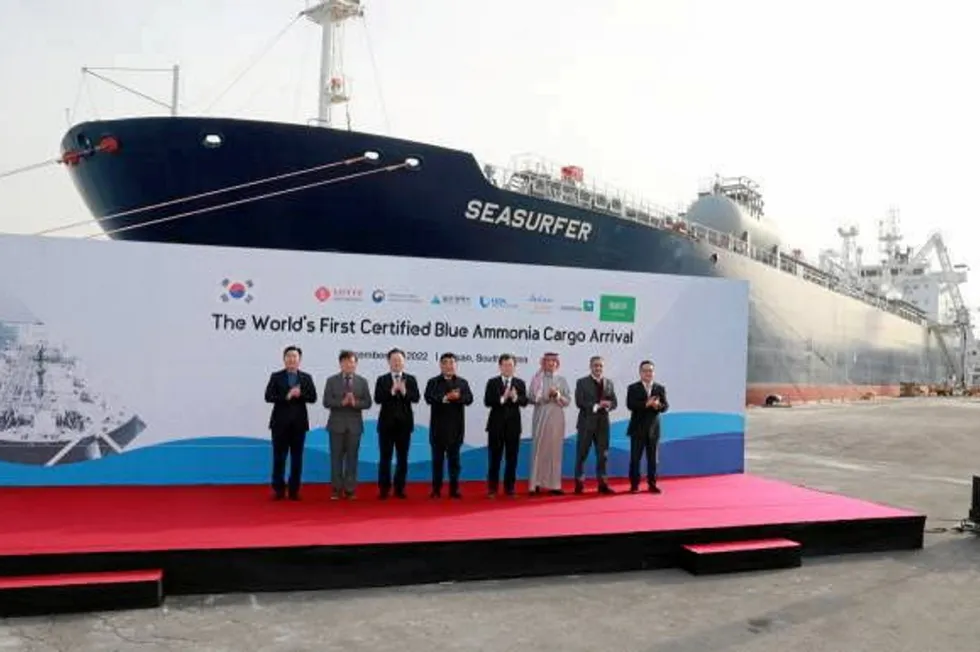The world’s first commercial shipment of “clean ammonia” has been unloaded at the port of Ulsan in South Korea after a 20-day 14,000km journey from Saudi Arabia.
The 25,000 tonnes of ammonia was produced by Saudi Aramco subsidiary Sabic from hydrogen derived from fossil gas, with the majority of the CO2 derived from the steam methane reforming (SMR) process captured and utilised at Aramco’s oil refinery in Jubail, Saudi Arabia.
The cargo was purchased by Korean ammonia producer Lotte Fine Chemical; certified as “blue” by German certification body TÜV Rheinland; and shipped from the port of Jubail on the LPG (liquid petroleum gas) carrier Seasurfer.
A second 25,000-tonne shipment is due to be delivered by the end of this year as part of the same contract by Sabic, which is 70% owned by Aramco.
However, there are question marks over how “clean” the ammonia and the shipments are.
In 2020, Saudi Aramco and Sabic exported 40 tonnes of blue ammonia to Japan as part of a pilot project backed by the Japanese government, which resulted in 50 tonnes of CO2 being captured in the SMR process — 30 tonnes of which was used to produce methanol, with the remaining 20 tonnes used for enhanced oil recovery.
Taking into account the hydrogen content of ammonia, and the average nine tonnes of CO2 released for every tonne of unabated grey H2 produced via SMR, this implies a carbon capture rate of 78.5%, according to Hydrogen Insight calculations.
Extrapolating this rate to the new project, and the blue hydrogen required to produce 50,000 tonnes of ammonia would release about 17,000 tonnes of CO2 into the atmosphere — before the captured carbon dioxide is used for enhanced oil recovery, methanol production or anything else.
Further greenhouse gas emissions are likely to be produced by the natural gas used to power the Haber-Bosch process, which combines H2 with nitrogen from the air, and from the roughly 5,000km shipments to the Korean port of Ulsan, where Lotte already has an ammonia terminal.
It is not the first international shipment of blue ammonia — that was a demonstration shipment of 40 tonnes from Saudi Arabia to Japan in September 2020, also involving Sabic and Aramco — but it is the first commercial one.
“The world's first introduction of commercially produced clean ammonia is an important step towards realising carbon neutrality not only for Lotte Fine Chemical but also for Lotte Group's chemical group,” said Lotte Group’s vice-chairman, Gyo-Hyun Kim. “We will preemptively promote the establishment of infrastructure from production to transportation and distribution to secure leadership in the entire process of the hydrogen industry.”
South Korea announced a new national hydrogen roadmap last month that aims to make the country the
“world’s No. 1 hydrogen industry” by the end of the decade, with much of its H
2 imported from overseas. Indeed, one of the explicit aims in the new document is to establish H
2 supply channels from the Middle East.
The Seasurfer vessel is already on its return journey to Jubail.
(Copyright)